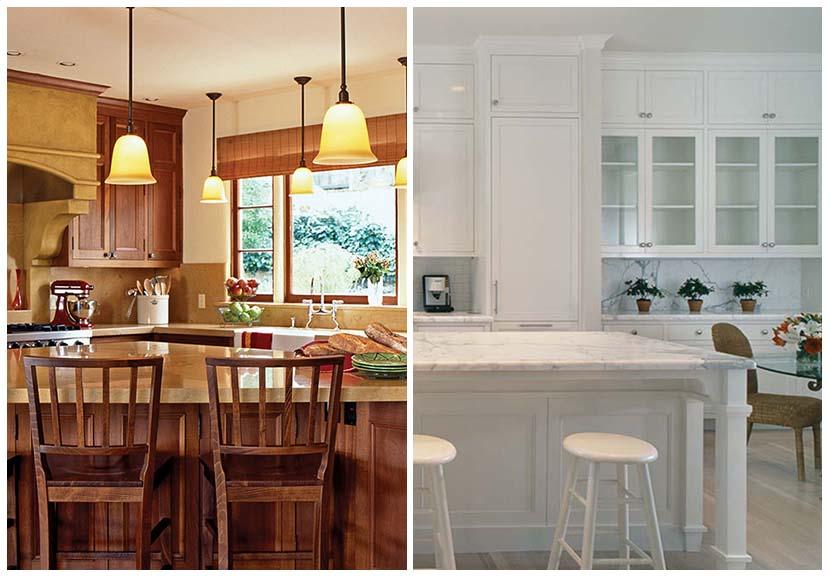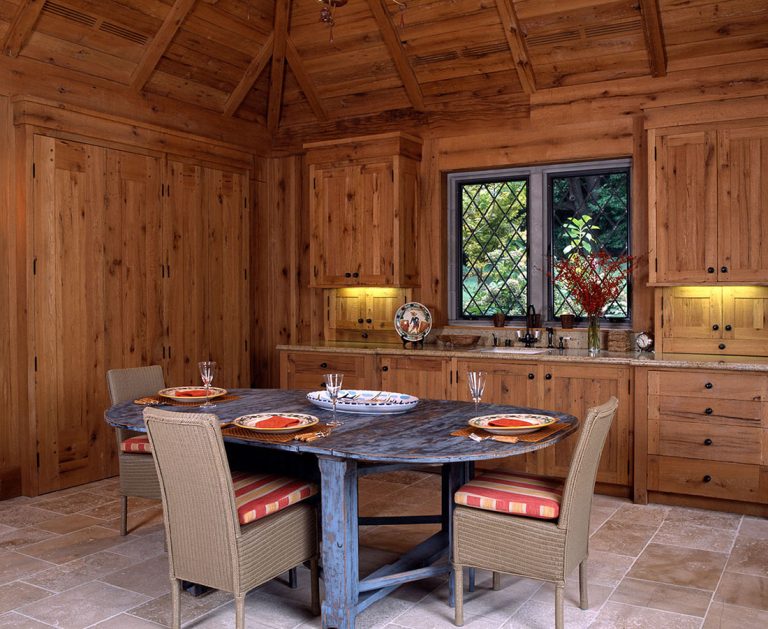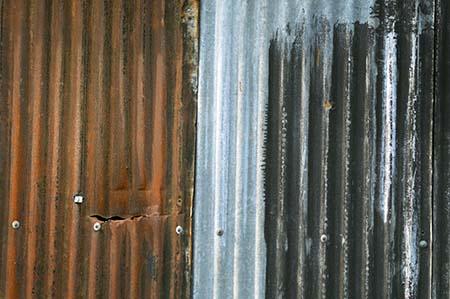Our Newsletters: From the Archives
Decades come and go, trends peak then wane. But style persists. In this edition of the Midland newsletter, we look at how the past is being revived and revised, from a cabinetmaker’s perspective, to suit the vision of 21st century homeowners.
Design Style: A Time of Transition

The kitchens pictured here are an example of what’s trending now among Midland clients: growing popularity for transitional styling. Transitional design is just that, a look that straddles two styles — the formal, more heavily molded look of traditional, or classic, design and the super-sleek look of full-on contemporary, or modern, styling. Transitional comes in a variety of flavors. The kitchen pictured at left, more formally known as Shaker style, and the kitchen at right are both technically “transitional.” Ornamentation like molding is kept at a minimum in transitional design, in keeping with its focus on a cleaner, more functional landscape. Transitional also features, in most cases, recessed cabinet panels with doors that have slightly rounded or “eased” (by hand) edges, as well as integrated finger pulls, the latter to reduce the aesthetic distraction of hardware on the cabinet fronts.
Metropolitan Style: Rough & Rusted

Farmhouse style is gaining fans among homeowners in our area who are looking for the feel of country living in an urban environment. Farmhouse certainly falls into the “old” category, especially when the design calls on true vintage materials to produce the coveted appearance of wood naturally distressed by the passing of time. Also popular is the industrial look, in which the rooms feature exposed piping in the ceilings or rusted corrugated metal sheeting as design elements. Thing is, vintage wood, like the rift sawn white oak we used in the kitchen pictured above — sourced from a century-old Midwestern barn — is hard to come by, and it’s often expensive to use and modify for modern purposes. And while pipes for the industrial look are usually already in the ceiling to uncover, it takes years for decorative metal to acquire its coveted rusty patina.
Rough & Rusted, but New


There is always a modern solution for reviving a vintage look. For instance, manufacturers are now offering quick-rusting sheet metal to satisfy the new appreciation for the aged industrial look. There is even better news from Midland when it comes to re-creating the timeworn look of a true farmhouse. The first is our use of radiata pine, a naturally rough-textured wood with an attractive grain. A relative of the Monterey and bishop pine, it is easy to manipulate — or distress — and is stain friendly. The second solution is by way of our new distressing (or brushing) machine from Felder. Called the Structura, it can turn a range of woods — pine, fir, Alaska cedar, and oak — into near-perfect farmhouse replicas, doing so through a process of brushing the wood with a variety of high-speed bristles.

